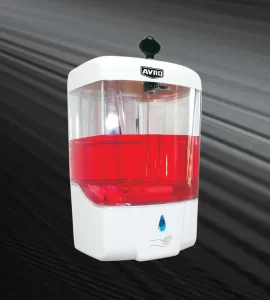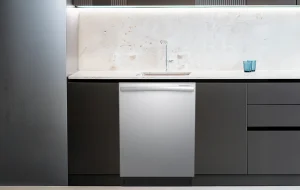
That old dresser sitting in your garage? The one with the chipped paint and a drawer that sticks? Don’t see it as junk. See it as a story waiting for its next chapter. Upcycling and repurposing vintage furniture isn’t just a crafty hobby; it’s a form of creative rebellion against our throwaway culture. It’s about seeing potential where others see a problem.
Honestly, it’s more than just saving money (though that’s a fantastic perk). It’s about injecting your home with soul, with pieces that have a history and a uniqueness you simply can’t buy new. Let’s dive into how you can transform the forgotten into the fabulous.
Why Bother? The Magic of Giving Old Furniture a Second Chance
Sure, you could head to a big-box store and buy something flat-packed. But what you get is, well, what everyone else gets. Upcycling is the antidote to generic interiors. Here’s the deal:
- Sustainability in Action: Every piece you save from the landfill is a small win for the planet. You’re reducing waste and the demand for new resources. It’s interior design with a conscience.
- Unmatched Character: New furniture is perfect. And sometimes, perfect is boring. Vintage pieces have dings, grooves, and a patina that tells a story. That character is pure gold.
- Cost-Effectiveness: Even with the cost of materials like paint, sandpaper, and new hardware, you can often create a high-end looking piece for a fraction of the price of a new one.
- A Custom Fit: You control the final look. The color, the finish, the hardware—it’s all you. The piece becomes a true reflection of your personal style.
First Things First: The Treasure Hunt
Okay, so you’re sold. Where do you find these diamonds in the rough? The hunt is half the fun, you know. You have to train your eye to see beyond the surface grime.
Prime Hunting Grounds
Forget the fancy antique stores for a minute—though they can be great for inspiration. The real gems are found where people are looking to offload stuff quickly.
- Estate Sales & Garage Sales: Goldmines. You can often find solid wood furniture for a song, especially on the last day when sellers are motivated.
- Online Marketplaces (Facebook Marketplace, Craigslist): The convenience is unbeatable. Search for terms like “vintage dresser,” “old desk,” or, my favorite, “free furniture.”
- Thrift Stores & Habitat for Humanity ReStores: These places are constantly rotating stock. Visit often.
- Curbside Alert: Never underestimate the power of a neighborhood drive on bulk trash day. Just, you know, make sure it’s actually meant to be taken.
What to Look For (And What to Avoid)
You want a project, not a nightmare. Here’s a quick checklist.
| Green Flags (Go for it!) | Red Flags (Think Twice) |
| Solid Wood Construction: It’s durable and sands beautifully. Knock on it—it should feel substantial. | Severe Water Damage: Warping or rot is often a structural death sentence. |
| Sturdy Joints: Look for dovetail or mortise-and-tenon joints. A little wobble is fixable; falling apart is not. | Overwhelming Smell: Lingering smoke or pet odors can be incredibly difficult to remove. |
| Interesting Details: Carved legs, unique hardware, cool lines. These are the elements that will shine. | Extensive Veneer Damage: While veneer can be repaired, large sections peeling off can be a headache. |
| Good “Bones”: The shape is right. It’s functionally sound. Cosmetic issues are easy fixes. | Insect Infestation: Look for fine powder (frass) or exit holes. Just… steer clear. |
The Transformative Process: A Basic Roadmap
Alright, you’ve hauled your treasure home. Now what? Don’t just slap on some paint. Preparation is everything—it’s the secret between a professional-looking finish and a messy one.
1. The Clean-Up & Strip-Down
This is the least glamorous part, but it’s crucial. Give the piece a good wipe-down with a mixture of mild soap and water to remove decades of dust and grime. If the existing finish is chipped or you want a natural wood look, you’ll need to strip it. Chemical strippers work, but citristrip is a popular, less harsh alternative. Or, you know, sanding. So much sanding. Start with a coarse grit and work your way to a fine one for a smooth surface.
2. Repair & Prep
Fix that wobbly leg with wood glue and clamps. Fill holes and deep scratches with wood filler. This is where you make it whole again. Once everything is solid and smooth, wipe away all the dust. Then, apply a primer. Primer is your best friend—it helps paint adhere better and can block stains from bleeding through. Don’t skip it. Seriously.
3. The Fun Part: Paint, Stain, or… Something Else?
This is where your vision comes to life. Chalk paint is hugely popular because it often requires minimal prep (sometimes no sanding!) and gives a lovely, matte, vintage look. Milk paint is another great, eco-friendly option for an authentic aged finish. For a more modern look, a high-quality latex paint in a satin or semi-gloss finish is durable and easy to clean.
And don’t forget about stain! If you’ve revealed beautiful wood grain, staining and sealing it with polyurethane can be stunning.
4. The Finishing Touches
The jewelry for your furniture. Swapping out old, dated hardware for new knobs or pulls can change the entire personality of a piece. Finally, protect your work. A clear wax over chalk paint, or a few coats of water-based polyurethane over other paints, will ensure your masterpiece lasts for years to come.
Beyond the Paintbrush: Creative Repurposing Ideas
Now, let’s get really creative. Repurposing is about thinking outside the box—or, in this case, outside the dresser. It’s about seeing an object not for what it was, but for what it could be.
- From Dresser to Kitchen Island: Remove the mirror from a vintage dresser, add a butcher block or stone top, and you have an island with built-in storage. Instant kitchen upgrade.
- Door to Wall Art or Headboard: A beautifully paneled old door can be cleaned up and hung as a dramatic piece of art. Or, mount it horizontally behind your bed for a stunning, rustic headboard.
- Ladder to Blanket Rack: An old wooden ladder, secured to the wall, becomes a charming, space-saving way to display quilts and throws.
- Suitcase to Side Table: Stack a couple of vintage suitcases and secure them together. Top with a piece of glass, and you have a quirky, nostalgic table with hidden storage.
A Final Thought: It’s Your Story to Tell
In a world of mass production, an upcycled piece is a quiet act of individuality. It’s a connection to the past and a gift to the future. The goal isn’t perfection. In fact, sometimes the slight imperfections—the brush stroke you can barely see, the ghost of a previous color—are what make it truly yours.
So, find that piece. Give it a good clean. And listen to what it wants to become. The next chapter is yours to write.








